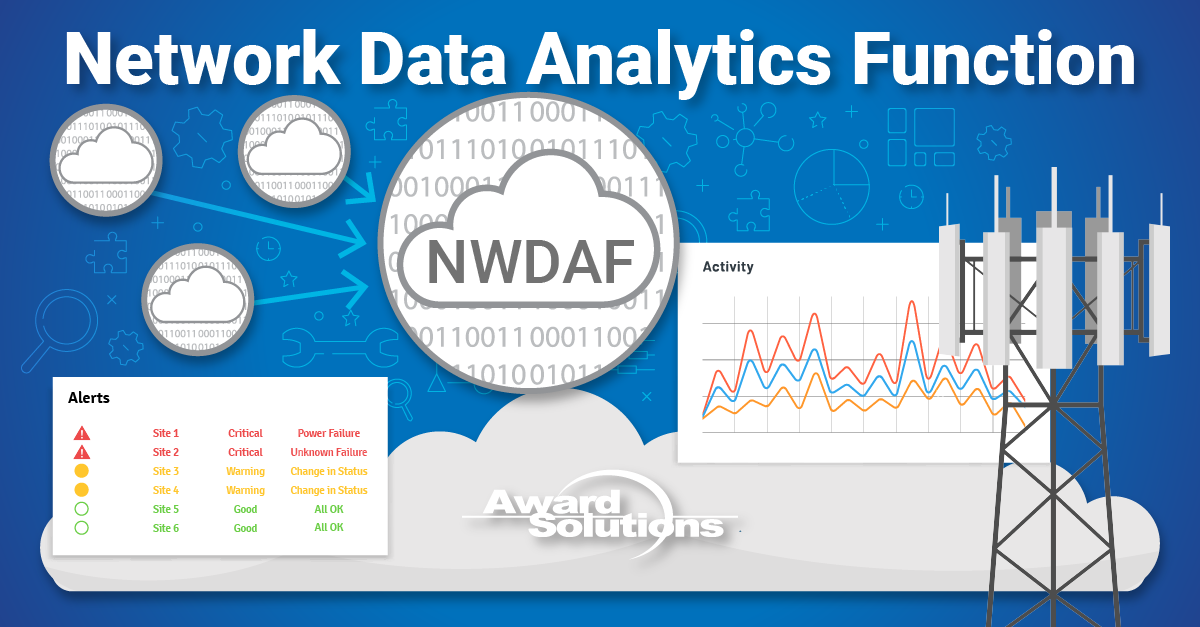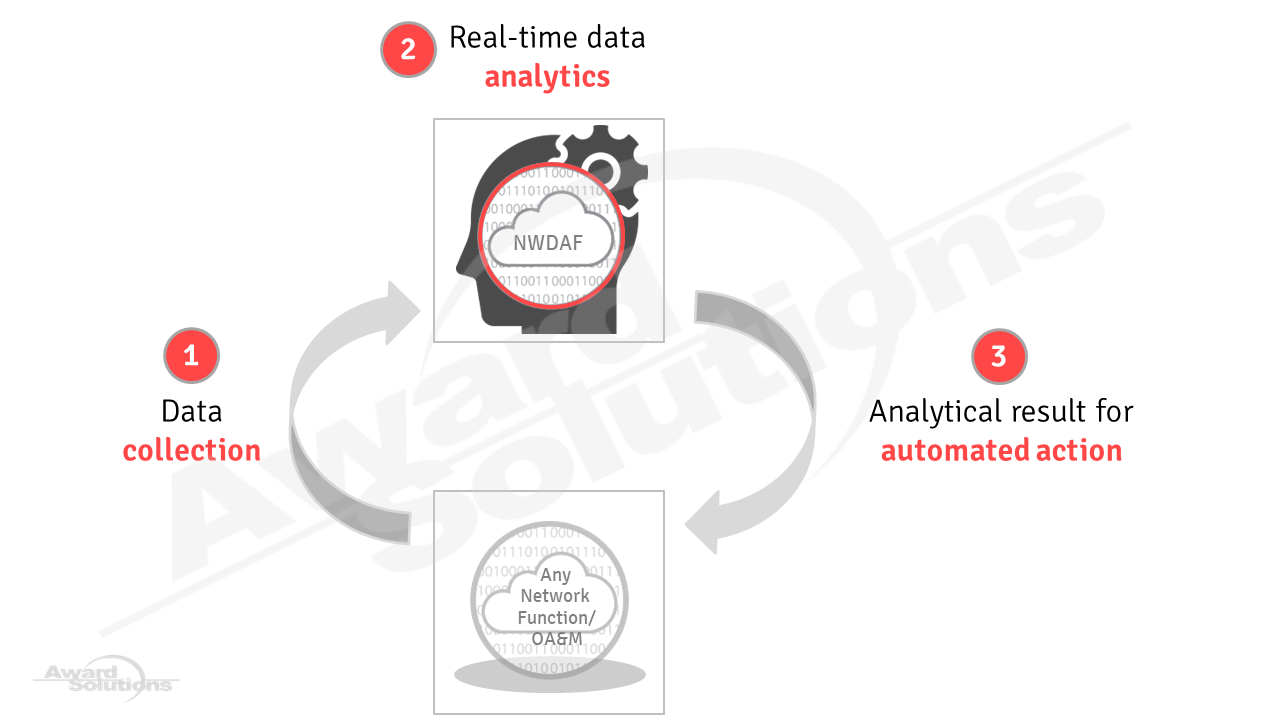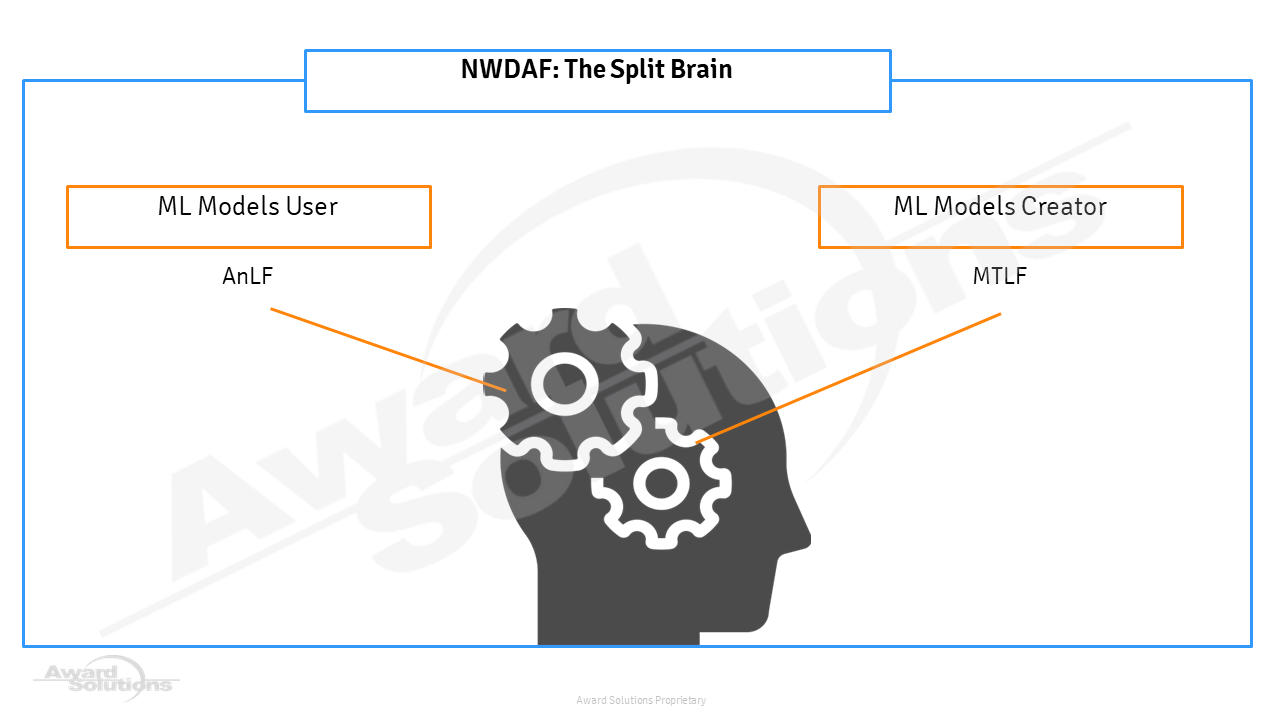
The Network Data Analytics Function (NWDAF) works as a data detective, which collects many data types, such as usage of the network, User Equipment (UE) behavior, and service experience. Like the movie Moneyball, which analyzed player statistics to remake the Oakland Athletics into a winning team, NWDAF uses collected data to generate analytics such as statistics and predictions. The NWDAF analytics results are real-time input that helps other network functions take action to perform network optimization and enhance the user experience. Let's explore the high-level operations of NWDAF and its internal analytical and machine-learning functions.
High-level Operational View of NWDAF
NWDAF collects data from 5G network functions such as the Policy and Charging Function (PCF), Access and Mobility Function (AMF), and OA&M function. The collected data can be used as input to the Machine Learning (ML) algorithms resulting in end-to-end 5G network analytics.
Examples of collected data by NWDAF include:
- Radio Access Network (RAN) performance measurements
- 5G end-to-end Key Performance Indicators (KPIs)
- Network slice-related data such as the number of registered UEs, number of active data sessions, and load level of network functions (i.e., AMF, PCF) for a network slice
- Abnormal UE behavior data such as unexpected traffic starts and stops, user location, and user mobility patterns

Wireless network standards define a set of standard analytic IDs generated by NWDAF. Consumers of the analytics ID, such as application, network, and OA&M functions, can subscribe to the analytics results. As a result, the 5G network can use analytics information to help automate and orchestrate network optimization in real-time, simplifying changes and reducing the operational costs of the network.
NWDAF Internal Intelligence Functions
There are two main functions of NWDAF, the "split-brain" collaborating to produce insights. The Model Training Logical Function (MTLF) makes machine learning algorithms, and the Analytics Logical Function (AnLF) uses these machine learning algorithm(s) output from the MTLFs to produce actionable network insights.

Model Training Logical Function (MTLF)
The Model Training Logical Function (MTLF) produces machine-learning models based on the data collected by NWDAF. These machine learning models can provide analytics in several areas, such as:
- Network optimization: Models to predict network performance by identifying any bottlenecks and future traffic patterns
- User experience: Models to predict user experience to meet the application's Quality of Service (QoS)
- Anomaly detection: Models to predict potential security threats from devices, such as possible Distributed Denial of Service (DDoS) attacks
Analytics Logical Function (AnLF)
The Analytics Logical Function (AnLF) utilizes the machine learning models produced by MTLFs to generate intelligent, actionable insights (e.g., predictions). In addition, the AnLF contributes to MTLF model training by providing new data input and selecting training model features.
These analytics (statistics and predictions) can be subscribed to and used by consumers, such as applications, 5G networks, and OA&M functions. For example, predictions can be applied in areas such as:
- Network function load (e.g., average and maximum load)
- Network performance (e.g., Radio Access Network average ratio of success handovers)
- UE mobility (e.g., UE location such as cell or tracking area)
- UE Abnormal behavior (e.g., Suspicion of Distributed Denial of Service Attach (DDoS))
The AnLF predictions provided include both a confidence factor and a validity period.
NWDAF's Model Training Logical Function (MTLF) is the producer of the machine learning algorithms used by NWDAF's Analytics Logical Function (AnLF) to provide the insights that will empower the 5G network at various deployment locations such as core and edge.
NWDAF's real-time impact on operational simplification and cost savings is like the 6 MIT students in the movie "21.21," who taught the viewers that profiting is possible based on predictive analysis from the collected data.
Insights such as application performance, user experience, and user behavior enable the 5G network to take actions in real-time to achieve both the desired user experience and the service Quality of Experience (QoE).
5G is expected to service billions of devices. For example, the forecast for IoT devices alone is over 20 billion, as predicted by IoT Analytics in the next few years. Therefore, meeting applications demand for highly time-sensitive applications, such as connected and self-driving cars, can only be achieved with an adaptive network that utilizes intelligence such as that provided by NWDAF's MTLF and AnLF.
References
- 3GPP TS 23.501: System architecture for the 5G System (5GS)
- 3GPP TS 23.502: Procedures for the 5G System (5GS)
- 3GPP TS 23.288: Architecture enhancements for 5G System (5GS) to support network data analytics services
